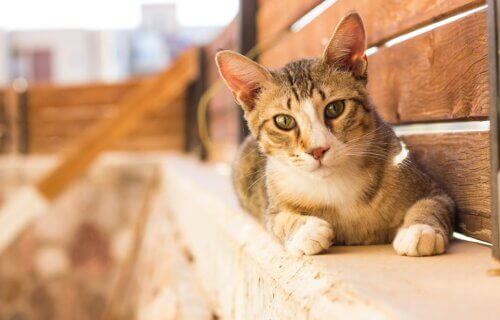ÅS, Norway — Have you ever wondered just where your pet cat runs off to each time they venture out of the house? According to new research from the Norwegian University of Life Sciences, not very far at all. Scientists used GPS technology to track a group of nearly 100 cats living in East Norway, and the results suggest home is where the heart is – even for cats!
“The goal was to map the movements of an entire population of pet cats within the same area,” says NMBU-professor Richard Bischof in a press release.
All of the cats selected for this study lived within a small neighborhood, allowing researchers to get a better idea of many cats’ activities within a limited area. On average, the cats spent 79 percent of their time outside within 50 meters (164 feet) of their home. For all cats, the average maximum distance from home recorded was 352 meters (1,155 feet).
“Some individuals traveled relatively far, sometimes several kilometers, but those were the exceptions,” Prof. Bishof says.
So what can the average cat owner learn from this study? The next time you let your cat outside, you can safely bet that they’re probably just around the corner hanging out or hunting.
“As far as we know, no one has ever tracked that many cats in one small area. This made it possible for us to show what a domestic cat population looks like in time and space,” Prof. Bischof explains. “We tend to think of animal populations as a collection of individuals or a single number. Instead, I prefer to see them as surfaces that envelop and interact with the landscape.”
While it’s common for owners to consider their cats “part of the family,” study authors explain that these felines are also a part of the larger cat population in the area, or the “catscape.”
“The catscape is the combined intensity with which an area is used by all cats living there, and we were able to create a map of it using GPS data,” Prof. Bischof comments.
The data also suggests a whole lot of variation in cat tendencies while outside. In other words, just like humans, what floats one cat’s boat may not please another. “This is quite typical,”Bjarne O. Braastad, professor emeritus of ethology at NMBU, notes. “Cats have different personalities, and research results reflect this: there is often great variation.”
Moreover, Prof. Braastad believes many cats spend their time outside relaxing and resting in their own garden or lawn more than anything else. “It is also worth noting that almost all the cats were neutered,” he adds. “It will of course play an important role. Neutered cats are less likely to roam.”
Cats, of course, also have a big impact on their surrounding environment and ecosystem. Researchers explain that the way in which a cat uses its landscape heavily influences how it interacts with the environment.
“An interesting topic for further studies is of course the effects on local wildlife,” says project manager and professor Torbjørn Haugaasen. “We did not have the opportunity to include it in this project period, but in the future we would like to take a closer look at that as well.”
Researchers believe they’ve touched a nerve with their work. Since this project became public, residents of Norway from all over the country have reached out, asking to have their own cats tracked. “People are obviously very curious about what their cat does when it is out and about. Interest has been really high,” concludes Haugaasen.
The study is published in Scientific Reports.
